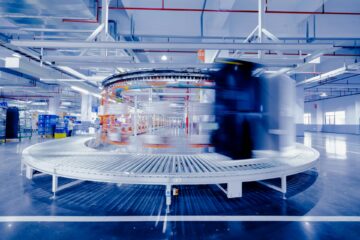Defining Your Business Needs
Finding the best commercial space for your business starts with a deep understanding of what truly defines your business operations. Before stepping into a prospective property, invest time assessing your company’s core functions, workflow, and unique service offerings. Whether launching a boutique retail store, setting up a tech startup, or relocating an established law firm, your industry’s identity shapes your real estate priorities. For instance, a restaurant needs an obvious, accessible space with high kitchen capacity, while a healthcare provider seeks ADA compliance and specialized facilities. Office-based businesses might prioritize layout efficiency, private meeting zones, or quiet areas for concentration. Understanding those unique needs ahead of time streamlines the selection process and weeds out unsuitable options, saving valuable time and money. Crafting a comprehensive checklist is an invaluable step in this process. That might include non-negotiable essentials like minimum square footage, ceiling height for displays or equipment, on-site storage, and “wish list” features such as natural light, signage opportunities, or potential for future expansion. Business owners who want to find exclusive Miami commercial property for lease or explore ideal properties in other cities benefit from being specific and thoughtful during this phase. A well-defined requirements list clarifies your search for yourself and communicates decisively with brokers and property managers, speeding up the process and fostering more fruitful negotiations.
Businesses that prioritize strategic planning—and keep their requirements closely aligned with business operations—see higher satisfaction rates, more adaptable workforces, and greater scalability for future growth.
Analyzing Location Factors
Deciding on a commercial space location should reflect data and a nuanced understanding of your customers and employees. A storefront near complementary businesses can drive foot traffic; think cafes next to bookstores or salons close to gyms. Conversely, too many direct competitors can saturate the market, diluting your unique presence. Consider your target demographic: where do they live, work, and shop? Are they reliant on public transportation, or do they need ample parking? Businesses that operate in dense urban corridors often benefit from transit access and steady pedestrian flow, while logistics operations may require proximity to highways or industrial parks. The correct location can uplift the company’s brand and foster relationships with the broader business community. The time of day, week, and even season can affect location dynamics, so visiting a property multiple times under different conditions is essential. Look for cues about neighborhood safety, local events, and customer activity that could influence your business. The National Association of Realtors notes that businesses in thriving mixed-use areas enjoy built-in marketing and networking advantages. Additionally, considering the broader area’s economic stability, local development plans, or population demographic shifts will help safeguard your investment in the future. Hidden gems often lie beyond the most popular districts—providing the perfect blend of accessibility, affordability, and growth opportunity.
Understanding Lease Types and Terms
Delving into commercial lease agreements may seem daunting, but it’s one of the most critical steps in finding a space that supports your business today and in years to come. Commercial leases come in three primary types: full-service (or gross), net, and modified gross, each distributing costs and responsibilities differently between landlord and tenant. Full-service leases typically package major expenses—like taxes, insurance, and maintenance—into the rent, providing predictability but sometimes at a premium. On the other hand, net leases separate these costs, which can result in lower rent initially but unexpected spikes when external factors change. Modified gross leases allow customization of fees tenants pay directly, offering a balance between stability and flexibility. Negotiating and clarifying every clause, from who handles HVAC maintenance or property upgrades to what happens if the elevator breaks or utilities spike unexpectedly, is essential. Most importantly, scrutinize terms regarding lease length, renewals, rent escalations, early termination rights, and subleasing potential. Ask for precise definitions of each responsibility. Work closely with a real estate professional or attorney to ensure you’re not surprised by hidden obligations or restrictions—these can significantly affect overhead and growth plans, particularly if your business model requires frequent adaptations or the ability to scale up (or down) quickly.
Considering Budget and Costs
A well-prepared budget protects your business from unwelcome surprises and financial strain. The commitment doesn’t stop with monthly rent; hidden fees and fluctuating costs can dramatically influence the affordability of a space over time. Beyond base rent, factor in expenses like utilities, cleaning services, security, landscaping, standard area maintenance (CAM) fees, property taxes, repairs, and insurance. If your lease is net or modified gross, confirm how often these charges are evaluated and increased. Calculate up-front tenant improvement costs for spaces requiring remodeling and whether the landlord can share those expenses. It’s also wise to analyze unexpected scenarios—unforeseen HVAC repairs, higher-than-expected utility usage, or external construction that impacts your business. Shifting supply costs and market uncertainties make reading the financial fine print and building contingency funds vital. Transparent communication with the landlord can clarify escalation clauses or extra fees. Maintaining a cash reserve of several months of total occupancy costs—rent plus all ancillaries—gives you peace of mind and stability when the unexpected arises.
Assessing Amenities and Infrastructure
Amenities and infrastructure are often what set one commercial property apart from another. An attractive, functional space goes well beyond four walls; consider the quality of basic services like heating, air conditioning, and electrical systems. Increasingly, businesses depend on fast, reliable internet, redundant power options, and robust security. Parking availability, conference rooms, and kitchens can significantly impact employee satisfaction and retention. On-site management or maintenance support can be critical, especially for tenants who need problems fixed quickly to maintain smooth operations. Flexibility in the physical layout is increasingly essential. Growing teams or hybrid work models might shift your requirements within a few years. Evaluate whether there’s room to expand—or adapt the layout as needs evolve—and check if leases allow such modifications. Sustainable features like energy-efficient windows or lighting, green roofs, and waste management programs also draw more attention from ecological and socially conscious companies. Assess what’s included in the rent and what can be upgraded by negotiation, mainly if your brand relies on specialized amenities to thrive.
Legal and Regulatory Considerations
Zoning and compliance can make or break a commercial property’s viability. Confirm that a prospective space is appropriately zoned for your business use—even if the previous occupant was similar, regulations may have changed. Special use permits, fire safety compliance, accessibility, and signage rules can all significantly impact setup costs and the ability to operate without interruption. Regulated industries require even more scrutiny and may involve navigating complex municipal and state rules. Lease documents contain critical information about your legal rights—don’t just sign and hope for the best. Reviewing the agreement with an attorney ensures actionable clarity on default penalties, insurance requirements, renovation permissions, and liability limits. Many businesses benefit from negotiating flexibility for subleasing, expansion, or early exit, allowing adaptability as market conditions change. Failure to recognize a restrictive or ambiguous clause can lead to costly disputes and reputational headaches.
Adapting to Future Trends in Commercial Real Estate
The commercial property landscape has transformed rapidly in recent years, prompting savvy business owners to consider where the market is going—not just where it’s been. The hybrid and remote work surge has redefined office space demand, making flexible layouts and shorter lease terms increasingly attractive. Sustainability is at the forefront of building design, with green certifications, efficient energy use, and healthy indoor environments drawing both tenants and talent alike. Businesses seeking to attract younger or eco-conscious clients benefit from operating in buildings that match those values. Technology also continues to disrupt traditional commercial real estate. Properties with smart access, high-speed fiber, and advanced digital security support innovation and adaptability. Ask about a landlord’s willingness to upgrade or integrate new technology for tenants’ evolving needs. It’s prudent to think about “future-proofing”—securing space that can adapt as industries digitize, consumer behavior shifts and environmental standards rise.
Actionable Steps for Securing the Ideal Commercial Space
- Build a detailed requirements list, distinguishing “must-have” from “would-be-nice” features.
- Research several locations and visit in person at different hours to observe activity patterns.
- Request and review detailed breakdowns of all costs—base rent, utilities, maintenance, and incidentals.
- Work with a qualified attorney or commercial real estate expert to examine the lease for legal, financial, and operational risks.
- Negotiate tenant improvements and flexible terms about subleasing or expansion to future-proof your business as it grows.
- Check zoning, permits, and local regulations to ensure you’re fully authorized before making a long-term commitment.
Making a deliberate, research-backed decision about your next commercial space aligns with your company vision and sets you up for sustainable growth and ongoing satisfaction. By staying proactive and informed at each step, you create an environment that energizes your team, attracts customers, and positions your business for long-term opportunities.












